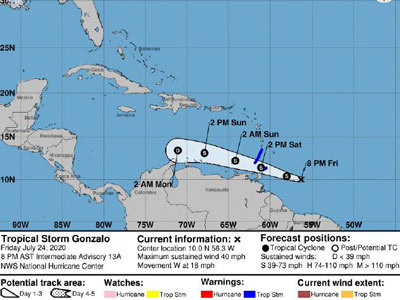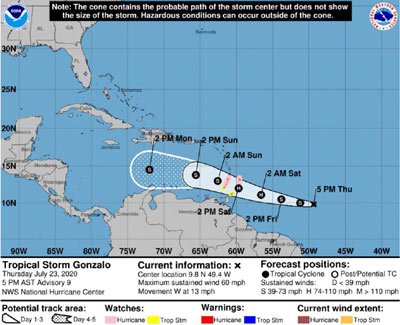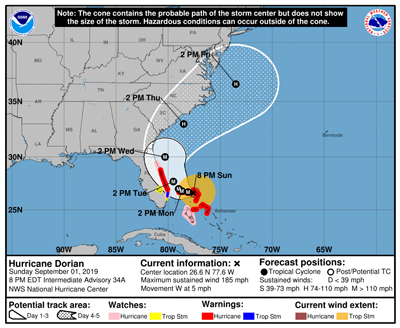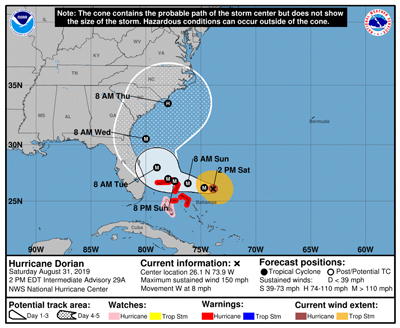NHC UPDATE
According to the National Hurricane Center (NHC) in Miami, Florida, as of 8:00 PM (AST) on July 24, 2020, the center of Tropical Storm Gonzalo was located near latitude 10 degrees North, longitude 56.3 degrees West. Gonzalo is moving toward the west near 18 mph (30 km/h). A general westward to west-northwestward motion is expected over the next two days. On the forecast track, Gonzalo will move across the southern Windward Islands Saturday afternoon or evening and over the eastern Caribbean Sea on Sunday.






